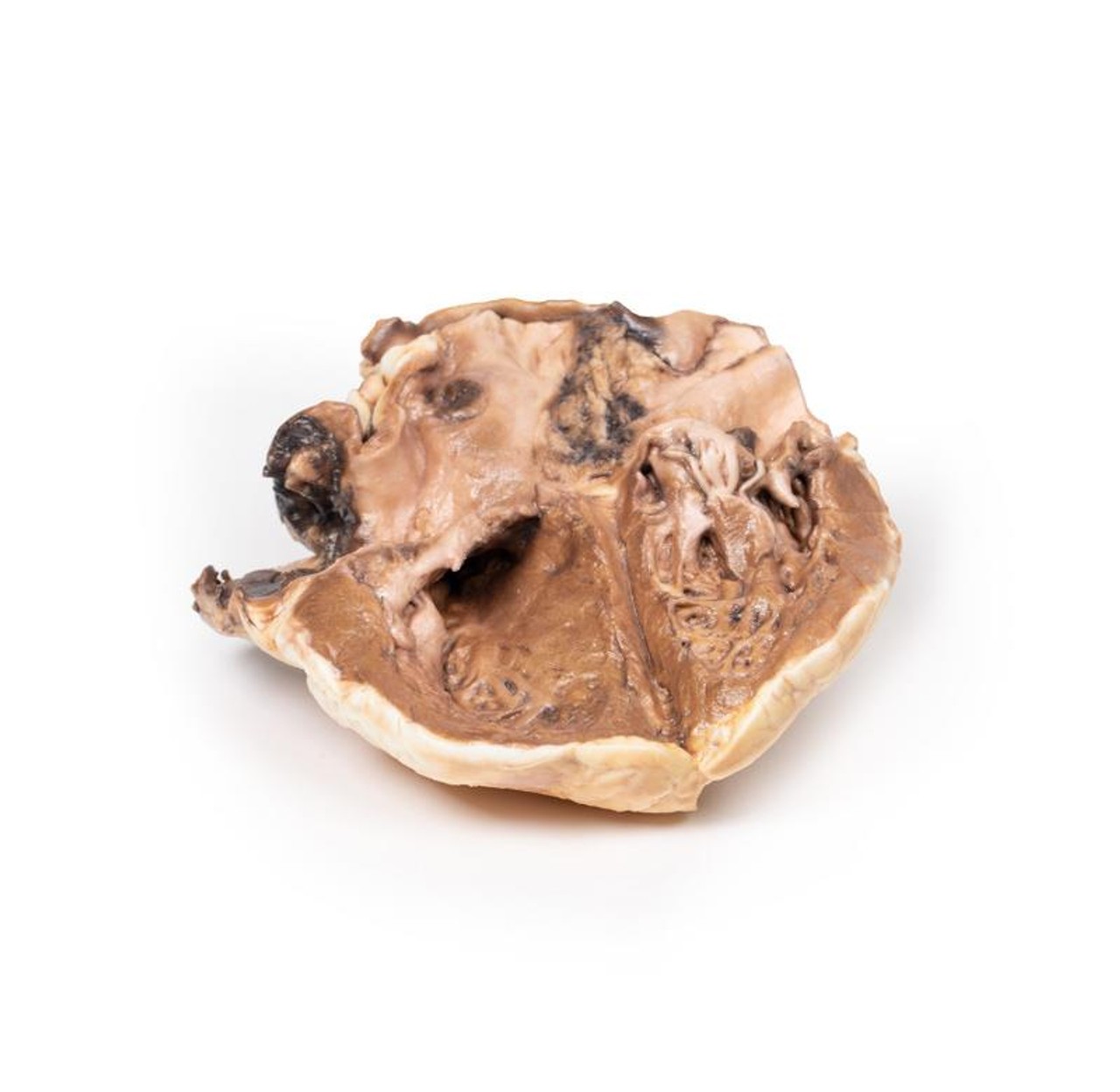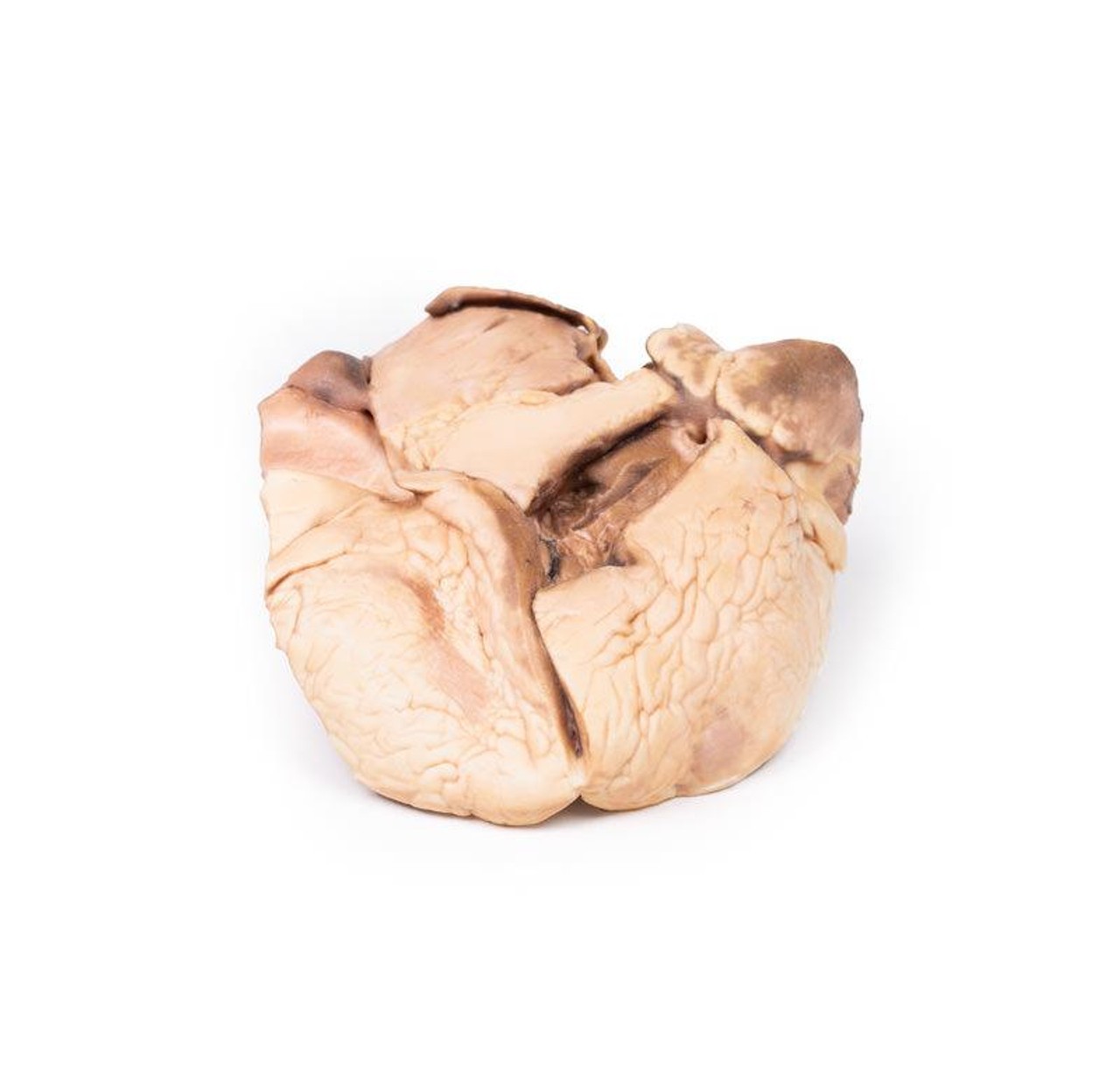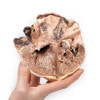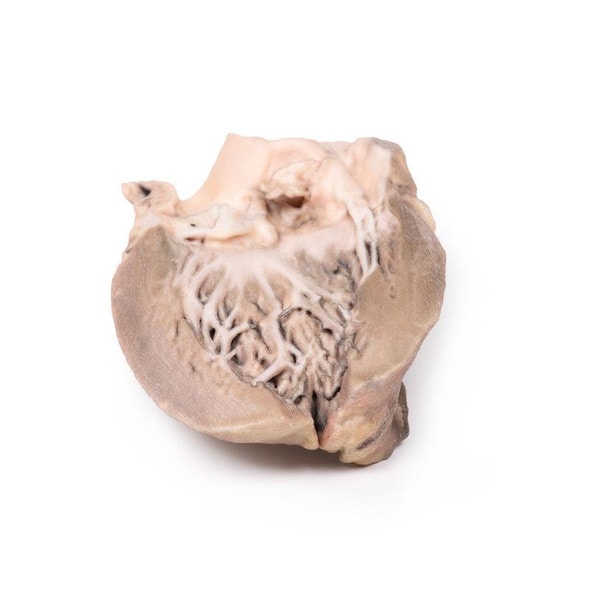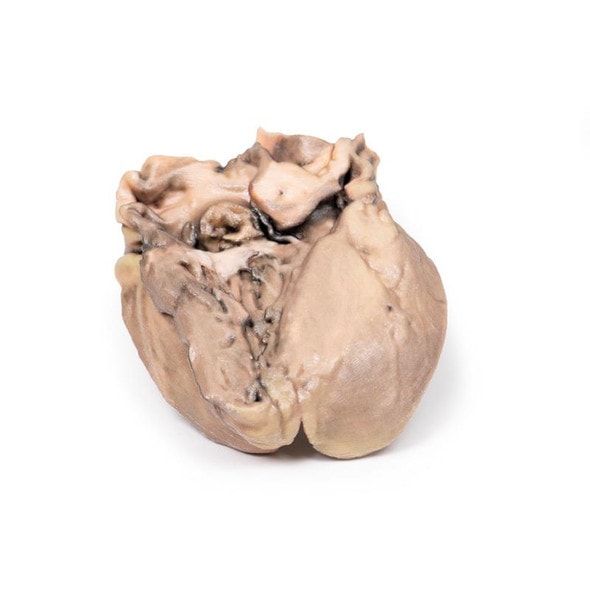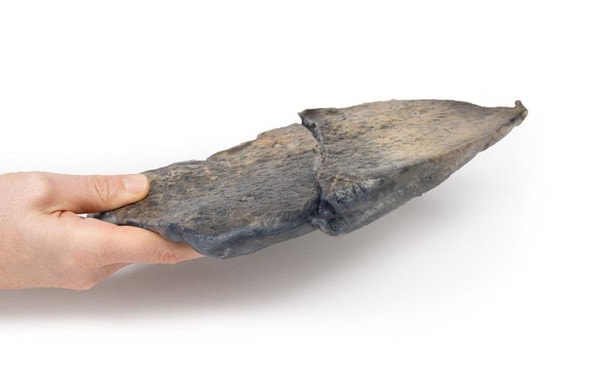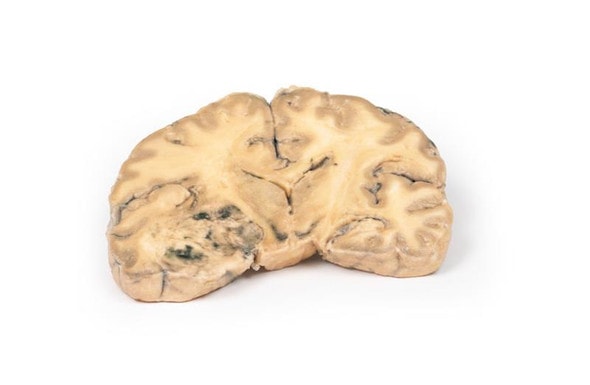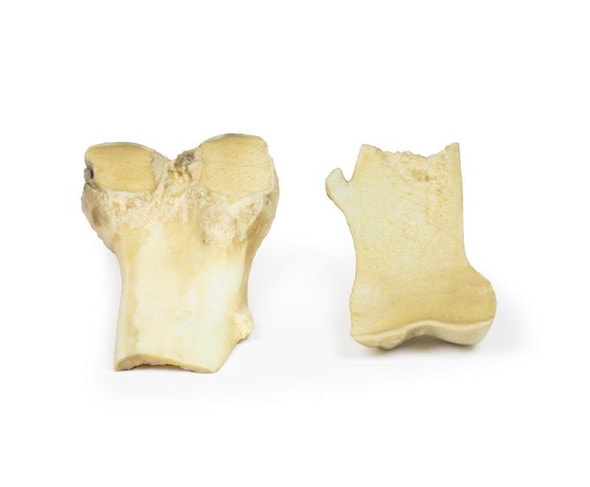Description
Developed from real patient case study specimens, the 3D printed anatomy model pathology series introduces an unmatched level of realism in human anatomy models. Each 3D printed anatomy model is a high-fidelity replica of a human cadaveric specimen, focusing on the key morbidity presentations that led to the deceasement of the patient. With advances in 3D printing materials and techniques, these stories can come to life in an ethical, consistently reproduceable, and easy to handle format. Ideal for the most advanced anatomical and pathological study, and backed by authentic case study details, students, instructors, and experts alike will discover a new level of anatomical study with the 3D printed anatomy model pathology series.
Clinical History
The patient was a 52-year old female with increasing dyspnoea. She gave a past history of fever with flitting joint pains in childhood following a sore throat. On examination: cyanotic, pulse showed atrial fibrillation, jugular venous pulse elevated, pan-systolic murmur at apex, hepatomegaly, and dependent oedema. She was being treated with digoxin, lasix (furosemide) and penicillin but died after cardiac arrest.
Pathology
The specimen is that of a heart opened to show the left atrium and left ventricle. The mitral valve has been cut, but those visible parts show significant thickening. The left atrial wall shows deposition of blood and fibrin. The left auricular appendage is filled with blood clot, caused by atrial fibrillation. The mural thrombus on the atrial wall is in the typical site:- the deep layers of the endocardium forming irregular thickenings, called MacCallum's plaques (arrows).
Further Information
In this patient, the history of fever and joint pains following a sore throat is very suggestive of a history of rheumatic fever. Rheumatic fever is an inflammatory disease that can involve the heart, joints, skin, and brain. Typical symptoms include fever, multiple painful joints, involuntary muscle movements (chorea), and occasionally a characteristic non-itchy rash known as erythema marginatum.
Rheumatic fever may occur 2-4 weeks following an infection of the throat by the bacterium Streptococcus pyogenes. If the infection is left untreated (with penicillin), rheumatic fever occurs in up to three percent of people. The underlying mechanism is believed to involve the production of antibodies against a person's own tissues (autoimmune disease). Due to their genetics, some people are more likely to get the disease when exposed to the bacteria than others. Other risk factors include malnutrition and poverty, occurring more commonly in low to middle income countries and particularly in Indigenous communities.
The heart is involved in about half of the cases. Damage to the heart valves, known as rheumatic heart disease (RHD), usually occurs after repeated attacks (carditis) but can sometimes occur after one. Carditis can progress to chronic rheumatic heart disease, usually affecting cardiac valves. The mitral valve is the most commonly affected valve, with fibrosis leading to mitral valve stenosis and this specimen highlights the thickening of the mitral valve. Stenosis is thought to occur due to Aschoff nodules, which are granulomatous lesions with a central area of fibrinoid necrosis and surrounded by an infiltration of autoreactive T cells. The Aschoff nodules also contain giant cells, which are thought to be some type of degenerative connective or endothelial tissue.
Stenosis may progress through the years and as it worsens, the left atrium will become increasingly dilated. Consequentially, atrial fibrillation may develop and mural thrombi can be formed. Further, tight mitral stenosis can result in severe cardiac failure.
Advantages of 3D Printed Anatomical Models
- 3D printed anatomical models are the most anatomically accurate examples of human anatomy because they are based on real human specimens.
- Avoid the ethical complications and complex handling, storage, and documentation requirements with 3D printed models when compared to human cadaveric specimens.
- 3D printed anatomy models are far less expensive than real human cadaveric specimens.
- Reproducibility and consistency allow for standardization of education and faster availability of models when you need them.
- Customization options are available for specific applications or educational needs. Enlargement, highlighting of specific anatomical structures, cutaway views, and more are just some of the customizations available.
Disadvantages of Human Cadavers
- Access to cadavers can be problematic and ethical complications are hard to avoid. Many countries cannot access cadavers for cultural and religious reasons.
- Human cadavers are costly to procure and require expensive storage facilities and dedicated staff to maintain them. Maintenance of the facility alone is costly.
- The cost to develop a cadaver lab or plastination technique is extremely high. Those funds could purchase hundreds of easy to handle, realistic 3D printed anatomical replicas.
- Wet specimens cannot be used in uncertified labs. Certification is expensive and time-consuming.
- Exposure to preservation fluids and chemicals is known to cause long-term health problems for lab workers and students. 3D printed anatomical replicas are safe to handle without any special equipment.
- Lack of reuse and reproducibility. If a dissection mistake is made, a new specimen has to be used and students have to start all over again.
Disadvantages of Plastinated Specimens
- Like real human cadaveric specimens, plastinated models are extremely expensive.
- Plastinated specimens still require real human samples and pose the same ethical issues as real human cadavers.
- The plastination process is extensive and takes months or longer to complete. 3D printed human anatomical models are available in a fraction of the time.
- Plastinated models, like human cadavers, are one of a kind and can only showcase one presentation of human anatomy.
Advanced 3D Printing Techniques for Superior Results
- Vibrant color offering with 10 million colors
- UV-curable inkjet printing
- High quality 3D printing that can create products that are delicate, extremely precise, and incredibly realistic
- To improve durability of fragile, thin, and delicate arteries, veins or vessels, a clear support material is printed in key areas. This makes the models robust so they can be handled by students easily.

